Smartphone Patents: Never-Ending War
As
competition in the more than $200 billion global smartphone industry
becomes more cutthroat, Apple and other are arguing that even the
smallest unique features are critical to getting an edge.
Microsoft Names New China Managers
Microsoft
appointed new top managers for its China operations, which continue to
contend with intellectual-property theft and regulations that keep the
Xbox 360 game console off the market.
Consumer Electronics | 11.10.2011
Why more photographers Leica it
All but swept away by an electronic revolution it couldn't contain, the German camera pioneer is now successfully surfing the digital wave and making money.
In fact, the company ended its most recent fiscal year in August with record sales, up 60 percent to nearly 249 million euros. That may still be only a fraction of what Japanese rivals Canon or Nikon generate, but is nevertheless a healthy money stream for a company respected by photography aficionados around the world.
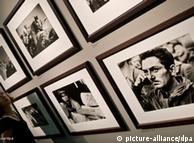 Renowned war photographer Robert Capa captured his iconic images with Leica camerasArresting moments
Renowned war photographer Robert Capa captured his iconic images with Leica camerasArresting momentsLeica helped pioneer the 35-millimeter film format that took photography out of the movie studio and into the streets. The company owes much of its fame to Oskar Barnack, who built the first small, lighweight camera for snapping shots on cinematic film.
Many of the 20th century's most arresting moments of revolution, war and its aftermath were captured by Leica cameras – their reputation cemented by Henri Cartier-Bresson, Robert Capa and other famous photographers from the Magnum Photos agency.
But the first years of the 21st century were less kind to Leica. The company bled money and burned through CEOs. Still firmly footed in the analog world, it saw the market share for digital cameras soar from zero to 90 percent within a matter of years.
Leica nosedived and then rebounded. The turnaround, admits CEO Alfred Schopf, is largely the achievement of Andreas Kaufmann, a wealthy German businessman and Leica fan who, in the middle of the past decade, began to pump millions into the cash-strapped camera maker to finance its push into the digital world.
"His investment was necessary and courageous, considering the situation at the time," Schopf told Deutsche Welle. "In the new fields of digital photography that we wanted to occupy, we needed money to build up know-how from scratch."
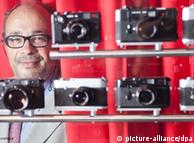 Supervisory board chairman Andreas Kaufmann played a crucial role in Leica's turnaround
Supervisory board chairman Andreas Kaufmann played a crucial role in Leica's turnaroundThe Solms-based company had previously dabbled in the digital market but with no success. In 1995, for instance, it built the unbelievable 75-megapixel camera, the S1, for an equally unbelievable price of around 50,000 euros in today's money. Around 150 units were sold and the camera's exorbitant development costs were written off.
Digital missteps
Leica was also ahead of the pack with auto-focus lens, which it invented. But in another miscalculated step, the company sold the patent to Japanese rival Minolta, arguing its customers knew how to focus.
Schopf believes digital missteps like these are now history. He points to the company's M9 as an example of the company's traditional mechanical and new digital prowess.
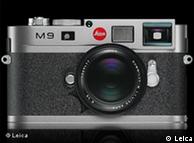 The M9 combines Leica optics with a Kodak digital sensorThe small, lightweight camera comes without the myriad of complex features of most digital single-lens reflex cameras and uses rangefinder technology, in the tradition and form of Leica's renowned film cameras. Users view and focus by looking through a small window on the back of the camera and turning a ring on the lens to merge the double image in the viewfinder center spot into one.
The M9 combines Leica optics with a Kodak digital sensorThe small, lightweight camera comes without the myriad of complex features of most digital single-lens reflex cameras and uses rangefinder technology, in the tradition and form of Leica's renowned film cameras. Users view and focus by looking through a small window on the back of the camera and turning a ring on the lens to merge the double image in the viewfinder center spot into one. That may not sound like high-tech digital photography but the small-system camera is equipped with a full 35-mm-sized, 18-megapixel sensor developed by Kodak.
In recent years, Leica has been spending between 25 and 39 million euros yearly on research and development, an amount that is up significantly over previous years driven by fast-paced sensor technology.
Quality manufacturing
While the company prizes its in-house competence, it collaborates closely with select partners, such as the Fraunhofer Institute and the University of Cologne. "The research teams of our partners are a couple steps ahead of us in their theoretical work," Schopf said.
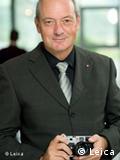 Leica CEO Schopf is selling more cameras than everAs for designing and building its own sensors – which have replaced film as the recording media in digital photography – Schopf also believes in collaborating with experienced partners, such as Kodak. "We have a very advanced digital department that oversees all our digital activities," he said. "I don't think we need to acquire this know-how completely because of the rapid development cycles in sensors. This wouldn't pay off."
Leica CEO Schopf is selling more cameras than everAs for designing and building its own sensors – which have replaced film as the recording media in digital photography – Schopf also believes in collaborating with experienced partners, such as Kodak. "We have a very advanced digital department that oversees all our digital activities," he said. "I don't think we need to acquire this know-how completely because of the rapid development cycles in sensors. This wouldn't pay off."Yet as important as the sensor is, it is only one of many components that make up Leica cameras. "We put relatively large sensors into small, compact cameras and equip them with the best lenses on the market," he said. "And we add to these superior design and quality manufacturing 'made in Germany.'"
And, speaking about made in Germany, Leica hopes to move by the end of next year into a new plant back in Wetzlar, where Barnack built the first Leica in 1914 at the Ernst Leitz Optische Werke – just in time to celebrate the company's 100th anniversary.
The Leitz Park, as the facility will be called in honor of the company's founder, will also house a section in which visitors can "experience" Leica craftsmanship close up and learn more about the "Leica Story" - with plenty of pictures, of course.
Author: John Blau
Editor: Sam Edmonds
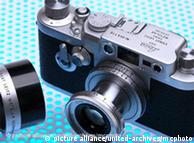
沒有留言:
張貼留言